 Devastation of a regional nuclear war would be far from confined to the countries that started it.Plants and animals, including humans, would be endangered by a global ozone hole that would result and persist for years after all the bombs were exhausted, a new study suggests.The layer of ozone high up in the Earth's atmosphere absorbs ultraviolet radiation from the sun before it hits the Earth's surface. Without it, almost all lifeforms would be bombarded by this energetic radiation, and though more research needs to be done into the specific effects of a significant ozone depletion, increased UV radiation can damage DNA and has been linked to the most common forms of skin cancer,as well as melanoma(the most lethal skin cancer)and cataracts."It would have a big increase in human ailments such as cataracts and cancer," said study leader Michael Mills of the University of Colorado at Boulder.Since 1990, the chances of developing melanoma have more than doubled according to a 2003 Environmental Protection Agency document. This increase is believed to be a result of increased exposure to UV radiation from ozone depletion caused by man-made chemicals that destroy ozone, such as chlorofluorocarbons (CFCs).What exactly the UV bombardment will mean in terms of species extinction is uncertain, Mill said. But he added, "it would affect the food chain."Researchers used a computer model to see how a regional nuclear war (in this case between Pakistan and India) involving 50 nuclear devices the size of the bombs dropped on Hiroshima would affect global ozone levels. The effect was far more massive than previous studies done in the 1980s had suggested, even though these studies had imagined a full-scale nuclear war, the authors said.The findings are detailed in the April 7 issue of the journal Proceedings of the National Academy of Sciences.About 40 countries in the world possess enough plutonium,uranium or a combination of both to construct substantial nuclear arsenals. A nuclear exchange like the one examined in this study would be only a fraction of a percent of the total explosive power of the world's nuclear arsenal, Mills said.Of the eight nations that have known nuclear arsenals, even those with the smallest, such as Pakistan and India, are believed to have 50 or more Hiroshima-sized weapons."The world has become a far more dangerous place when the actions of two countries on the other side of the world could have such a drastic impact on the planet," study co-author Brian Toon, also of the University of Colorado at Boulder.Smoky soot plumesPrevious studies, including a 1985 National Research Council Report, had examined the effects of nuclear war on ozone loss by considering the chemicals the bombs would spew into the atmosphere. But they failed to consider the massive smoke plumes that would rise into the air as the bombed-out cities burned.The new study considers both, painting a picture of citywide firestorms and ozone destruction."It has as much to do with the bombs as it does with the fuels in modern megacities," Mills said."Pretty much everything will burn in a city."A previous study conducted by Toon showed that as buildings, cars and other infrastructure burned, the air above would fill with soot. Some of this soot would fall out of the atmosphere in so-called black rains, but the rest would make its way up into the atmosphere within a matter of days, Mills said.The heat from these firestorms (like those that destroyed Dresden, Germany, in World War II) would push the soot-filled air into the upper troposphere, the bottom-most layer of the Earth's atmosphere.The blackened air would then be warmed by incoming sunlight and would rise further, into the stratosphere, which sits atop the troposphere and is the layer of the atmosphere where the ozone that protects us from the sun's harmful ultraviolet rays is found. The soot could eventually rise 50 miles (80 kilometers) up in the atmosphere, the study found.The new study found that up in the stratosphere, the soot would continue to absorb incoming sunlight and heat the surrounding air. This heat would jump-start the chemical reactions that destroy ozone."So the temperatures go way up and this changes the rates of a number of catalytic cycles that destroy ozone," Mills told LiveScience. As these cycles speed up, they wipe out the ozone molecules much faster than they would at normal temperatures.The heating of the stratosphere would also alter its circulation, prolonging the time that it normally takes for the air in that layer to turn over, prolonging the soot's effect on ozone destruction.Global ozone holeAbove the mid-latitudes, where the United States and most of Europe lie, ozone levels would drop by 25 to 40 percent.At higher northern latitudes, ozone losses would reach 50 to 70 percent, the model results show."The models show this magnitude of ozone loss would persist for five years, and we would see substantial losses continuing for at least another five years," Mills said.The 1985 NRC report found only a 17 percent depletion of stratospheric ozone over the Northern Hemisphere, which would recover by half in just three years."The big surprise is that this study demonstrates that a small-scale, regional nuclear conflict is capable of triggering ozone losses even larger than losses that were predicted following a full-scale nuclear war," Toon said.These losses would drop ozone levels below the amount that typically marks the seasonal ozone hole over Antarctica - only this ozone hole would extend from about 20 degrees north and south of the equator, creating a near-global ozone hole.The loss of this protective "sunscreen" layer could have a terrible impact on the plants and animals living below that would then be susceptible to UV radiation.Damage to plants and animals at mid-latitudes would likely rise sharply, according to the study, which was funded by the University of Colorado at Boulder. UV rays could also damage the bacteria at the roots of some crops, which the plants depend on for some food.Previous studies have shown residents of aquatic ecosystems, especially amphibians, are particularly susceptible to UV rays because they can do little to avoid it. Many plankton in the ocean could also be wiped out, endangering the many marine organisms that depend on them for food."They can't slap on sunscreen," Mills said.
Devastation of a regional nuclear war would be far from confined to the countries that started it.Plants and animals, including humans, would be endangered by a global ozone hole that would result and persist for years after all the bombs were exhausted, a new study suggests.The layer of ozone high up in the Earth's atmosphere absorbs ultraviolet radiation from the sun before it hits the Earth's surface. Without it, almost all lifeforms would be bombarded by this energetic radiation, and though more research needs to be done into the specific effects of a significant ozone depletion, increased UV radiation can damage DNA and has been linked to the most common forms of skin cancer,as well as melanoma(the most lethal skin cancer)and cataracts."It would have a big increase in human ailments such as cataracts and cancer," said study leader Michael Mills of the University of Colorado at Boulder.Since 1990, the chances of developing melanoma have more than doubled according to a 2003 Environmental Protection Agency document. This increase is believed to be a result of increased exposure to UV radiation from ozone depletion caused by man-made chemicals that destroy ozone, such as chlorofluorocarbons (CFCs).What exactly the UV bombardment will mean in terms of species extinction is uncertain, Mill said. But he added, "it would affect the food chain."Researchers used a computer model to see how a regional nuclear war (in this case between Pakistan and India) involving 50 nuclear devices the size of the bombs dropped on Hiroshima would affect global ozone levels. The effect was far more massive than previous studies done in the 1980s had suggested, even though these studies had imagined a full-scale nuclear war, the authors said.The findings are detailed in the April 7 issue of the journal Proceedings of the National Academy of Sciences.About 40 countries in the world possess enough plutonium,uranium or a combination of both to construct substantial nuclear arsenals. A nuclear exchange like the one examined in this study would be only a fraction of a percent of the total explosive power of the world's nuclear arsenal, Mills said.Of the eight nations that have known nuclear arsenals, even those with the smallest, such as Pakistan and India, are believed to have 50 or more Hiroshima-sized weapons."The world has become a far more dangerous place when the actions of two countries on the other side of the world could have such a drastic impact on the planet," study co-author Brian Toon, also of the University of Colorado at Boulder.Smoky soot plumesPrevious studies, including a 1985 National Research Council Report, had examined the effects of nuclear war on ozone loss by considering the chemicals the bombs would spew into the atmosphere. But they failed to consider the massive smoke plumes that would rise into the air as the bombed-out cities burned.The new study considers both, painting a picture of citywide firestorms and ozone destruction."It has as much to do with the bombs as it does with the fuels in modern megacities," Mills said."Pretty much everything will burn in a city."A previous study conducted by Toon showed that as buildings, cars and other infrastructure burned, the air above would fill with soot. Some of this soot would fall out of the atmosphere in so-called black rains, but the rest would make its way up into the atmosphere within a matter of days, Mills said.The heat from these firestorms (like those that destroyed Dresden, Germany, in World War II) would push the soot-filled air into the upper troposphere, the bottom-most layer of the Earth's atmosphere.The blackened air would then be warmed by incoming sunlight and would rise further, into the stratosphere, which sits atop the troposphere and is the layer of the atmosphere where the ozone that protects us from the sun's harmful ultraviolet rays is found. The soot could eventually rise 50 miles (80 kilometers) up in the atmosphere, the study found.The new study found that up in the stratosphere, the soot would continue to absorb incoming sunlight and heat the surrounding air. This heat would jump-start the chemical reactions that destroy ozone."So the temperatures go way up and this changes the rates of a number of catalytic cycles that destroy ozone," Mills told LiveScience. As these cycles speed up, they wipe out the ozone molecules much faster than they would at normal temperatures.The heating of the stratosphere would also alter its circulation, prolonging the time that it normally takes for the air in that layer to turn over, prolonging the soot's effect on ozone destruction.Global ozone holeAbove the mid-latitudes, where the United States and most of Europe lie, ozone levels would drop by 25 to 40 percent.At higher northern latitudes, ozone losses would reach 50 to 70 percent, the model results show."The models show this magnitude of ozone loss would persist for five years, and we would see substantial losses continuing for at least another five years," Mills said.The 1985 NRC report found only a 17 percent depletion of stratospheric ozone over the Northern Hemisphere, which would recover by half in just three years."The big surprise is that this study demonstrates that a small-scale, regional nuclear conflict is capable of triggering ozone losses even larger than losses that were predicted following a full-scale nuclear war," Toon said.These losses would drop ozone levels below the amount that typically marks the seasonal ozone hole over Antarctica - only this ozone hole would extend from about 20 degrees north and south of the equator, creating a near-global ozone hole.The loss of this protective "sunscreen" layer could have a terrible impact on the plants and animals living below that would then be susceptible to UV radiation.Damage to plants and animals at mid-latitudes would likely rise sharply, according to the study, which was funded by the University of Colorado at Boulder. UV rays could also damage the bacteria at the roots of some crops, which the plants depend on for some food.Previous studies have shown residents of aquatic ecosystems, especially amphibians, are particularly susceptible to UV rays because they can do little to avoid it. Many plankton in the ocean could also be wiped out, endangering the many marine organisms that depend on them for food."They can't slap on sunscreen," Mills said.http://news.yahoo.com/s/livescience/regionalnuclearwarwouldaffectentireglobe
As in the days of Noah....











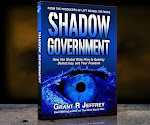


























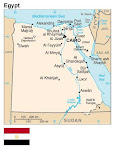





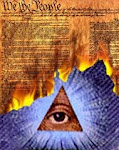









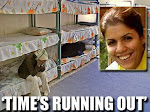








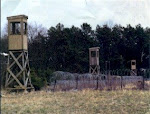





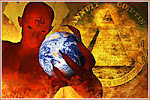
















.bmp)



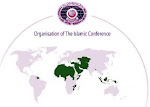




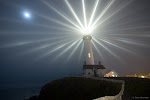


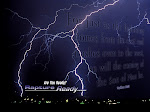
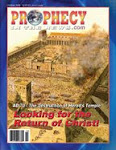












.bmp)